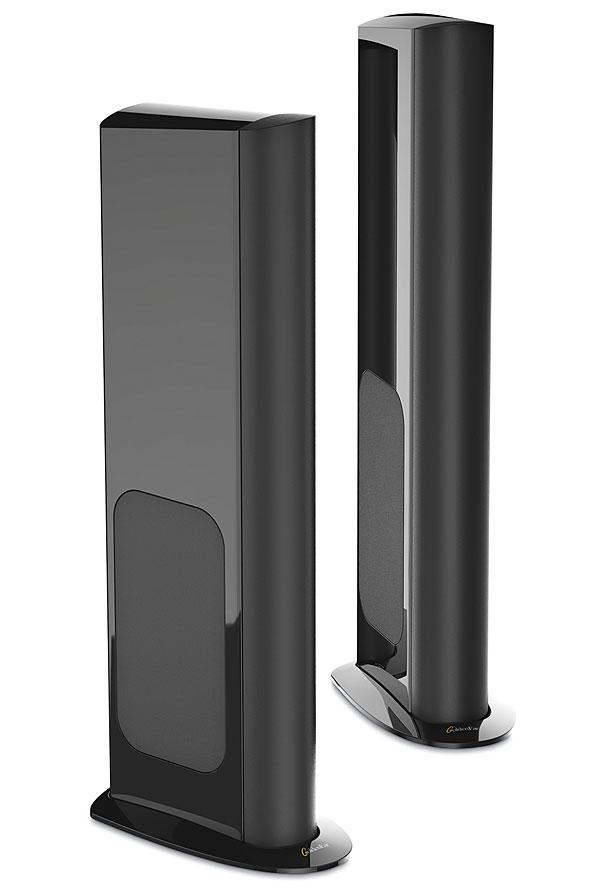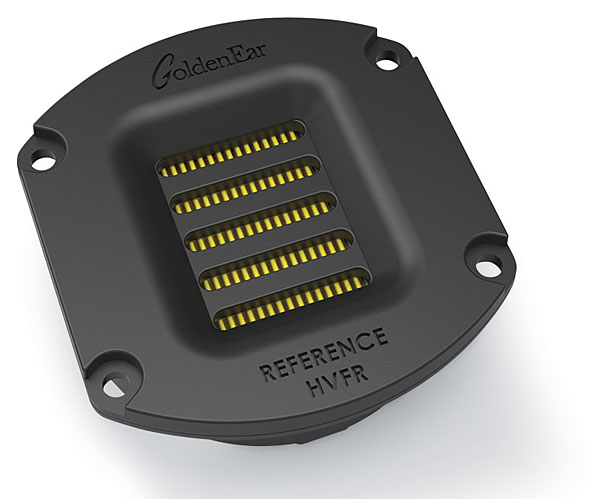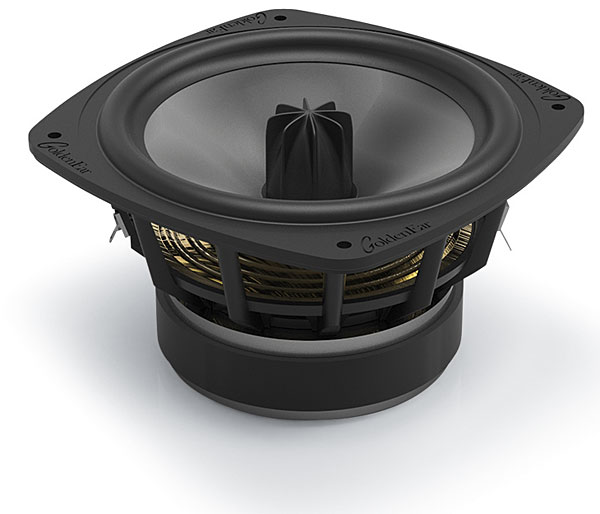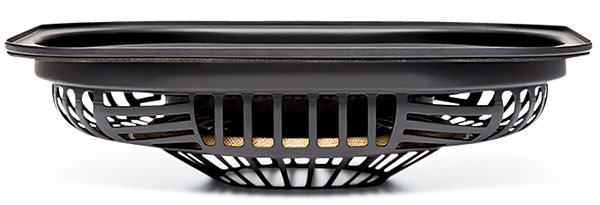"Price may seem high to non-audiophile civilians."
Gee, pardon us po' folks for living. I'm amazed you could see the keyboard you were typing on while you were looking down your nose at us.
GoldenEar Technology Triton Reference Loudspeaker Review

AT A GLANCE
Plus
Powerful, full-range sound
Great looks
Easily driven by modest-power amps
Minus
Price may seem high to non-audiophile civilians
Large, space-dominating size
THE VERDICT
With the Triton Reference, GoldenEar Technology has delivered their finest loudspeaker yet. It looks great, sounds great, and represents an exceptional value in high-end audio.
When I reviewed GoldenEar Technology’s debut loudspeaker, the Triton Two, shortly after the company launched in 2010, co-founder/president/polymath Sandy Gross indicated that it would be the first of many to come. He wasn’t exaggerating. New entries arrived thereafter in quick succession, including powered towers, passive towers, soundbars, subwoofers, bookshelf models, and in-ceiling speakers. And in 2014, the company introduced the Triton One. Priced at $2,500 each or $5,000 for the pair, it represented the pinnacle of GoldenEar’s mission to combine high performance with high value.
My take—and that of many others—was that the Triton One stood as a definitive put-up-orshut-up challenge to an industry increasingly disposed to selling staggeringly expensive products. That’s why I was surprised when, less than two years later, Gross dropped news of another ace up his sleeve: a speaker that would take the technology the company had worked into the One and improve on it. And though he was willing to relax his value-oriented mindset to achieve his goals for the new speaker, it would still come in at under $10,000 for a pair, a number that, while pricey for the average consumer, seems almost a trifle these days against more than a dozen exotic high-end speakers ranging from over $100,000 to up to $1 million or more per pair.
GoldenEar’s more affordable entry is the new Triton Reference, whose sticker price of $4,249 each translates to $8,498 per pair. Like the One, the Reference is a powered tower with a combination of traditional passive woofers and tweeter, plus a trio of active sub-bass drivers augmented by a quartet of passive radiators to achieve true full-range sound reproduction. But for this new flagship, GoldenEar has introduced a number of enhancements large and small that, taken in total, help to justify the Reference’s exalted name.

Reference Quality
Starting from the highest frequencies reproduced by the Triton Reference and working our way down, those enhancements include a new version of GoldenEar’s HVFR tweeter with 50 percent more neodymium magnetic material, a tweak that increases efficiency and allows for better control of the tweeter’s pleated planar diaphragm. The volume of the chamber located behind the tweeter has also been enlarged, and there’s a smoother angle to the transition between faceplate and diaphragm that helps to improve dispersion.
The bass/midrange drivers above and below the tweeter are 6-inchers, as opposed to the 5.25-inch drivers on the Triton One, and they incorporate a new cone that uses a low-mass bonding to the surround, claimed to improve transient response. Also larger are the 6 x 10-inch drivers in the speaker’s subwoofer section, which provide 40 percent more surface area than the One’s drivers and feature a substantially bigger magnet structure and voice coil. The 1,800-watt specified, 56-bit-DSP-controlled amplifier powers the active drivers, which are aided and abetted by 10.25 x 9.5-inch passive “planar infrasonic radiators” arranged on either side in an inertially balanced configuration similar to that found in GoldenEar’s SuperSub X and XXL subwoofers.

Designing a reference-quality anything involves sweating over details, and it’s clear here that GoldenEar did just that. As with the One, the Reference’s customized crossover uses a fully balanced circuit. Damping material inside the speaker’s cabinet is made from a custom mixture of Dacron and long-fiber lamb’s wool. The speaker’s base incorporates a 3/32-inch steel plate that GoldenEar says provides a dramatic increase in stiffness and stability over that of the all-medite bases used on the company’s other models. More detail: The Reference comes with stainless-steel carpet spikes instead of the brass versions typically provided with tower speakers.
Additionally, much work was concentrated on the speaker’s internal bracing for maximum rigidity, according to Gross. While this isn’t readily visible, what is visible is the speaker’s single-piece gloss-black monocoque cabinet. A first for GoldenEar (which has wrapped all previous Tritons in a black-mesh “sock” material), this cabinet improves performance by enhancing the speaker’s overall rigidity and “deadness.” It looks great, too: While other speakers put out by the company have followed the same basic design template, the attention paid to cosmetics here makes the Reference really stand out from the GoldenEar pack.

Setting Up
Standing nearly 5 feet high and weighing 110 pounds, the Triton Reference can’t help but dominate any space it’s placed in. Then again, as a speaker targeted at audiophiles, its likely home will be in a dedicated music or media room. (Given the number of drivers inside, it’s amazing how compact the cabinet actually is.) I enlisted help to hoist a pair of the speakers into place, and I’d recommend that anyone else seek out the same.
Setting the speakers up in my 17 x 20-foot listening room, which has a ceiling height of 9 feet, I positioned them about a foot out from the front wall and spread 9.5 feet apart, with each tower angled in toward the main listening seat. The specific area of the room where the speakers sat has a wood floor, so I used the included adjustable rubber feet to fine-tweak position, sloping the front baffles slightly forward to better align the HVFR tweeters with my head. Tweaking was carried out in the company of Gross, who then found time to take in a Picasso exhibit at the local art museum before flying out early to escape a blizzard.
Like other GoldenEar powered towers, the Reference features an RCA-jack LFE input on its lower back panel. This can be used to run a separate LFE subwoofer signal from a processor or receiver, which lets you tweak bass level using the processor’s or receiver’s remote control when the speakers are in a home theater setup. Since my test was primarily stereo-only, I simply connected my 80-watt-per-channel integrated amp to the speaker’s gold-plated binding-post inputs. (With efficiency spec’d at 93.25 decibels, the Reference was easy to drive to exceedingly loud levels; even a 60-wpc amp I swapped in at one point proved more than sufficient in my room.) Lastly, I left the Subwoofer Level dial on the back panel at its center setting, which provided plenty of bass to fill my approximately 3,000-cubic-foot listening room.
Listening Up
With so much effusive (and in some instances, over-the-top) praise having been heaped on the Triton One, I’m afraid that any nice comments I make about the Triton Reference may come off as inadequate. You’d think that with the One, GoldenEar had created a type of audio crack, as opposed to just a really good speaker. Anyway, here I go.
- Log in or register to post comments

It's all a matter of priorities. I make WELL under six figures (significantly so), and yet I have both a 2 channel system worth over $10,000 and a 5.1 theater system worth about $12k.
Now, I also drive a 3 year old Kia Soul, and live in a 960 sq ft home.
My point is that if audio is important to you, and I mean REALLY important, you will sacrifice other things in life to enjoy your hobby. If it's not a priority, then a $2000/pair set of speakers will seem excessive to you. Do not judge others based on where THEY are approaching their hobby from!
I would also point out that not everyone earns the same amount of money you do. You could approach this fact of life with an attitude like your ("pardon us po' folks") or realize that some products will ALWAYS be out of your reach. I will never own a pair of Wilson Audio speakers, for instance. But this doesn't mean that these products have no place in our society. There are MANY people in the supply chain, from the people manufacturing the speakers (most high end brands are NOT made in China!), to the people who ship the speakers, to the distributors, to the salespeople who all make a living wage to supply the wealthy with toys the rest of us can not afford. In short, sir, I find your comment nonsensical, and strange considering the forum in which you post it.

Hyper sensitive...you're like the guy who reacts to a normal "Hello" with "What do you mean by that?" Climb down put on your bubble wrap suite and go outside to play in the sunshine.
I too am a Golden Ear owner, super happy with the products amazing value. No apologies for the sound what so ever. Squeezing the the most sound out a of a tight wallet is a big avocation of mine...GE products = huge bang for the buck.

If I had the cash I would not hesitate to buy both as they represent state of the art in their respective fields, at a somewhat affordable price.
I own DefTech STS power towers, and have dreamed of up grading to the new ST-L at $5,000 a pair. I myself prefer the over all sound quality of the ST-L to the Triton one. Both of which I've audition with my own material.
Nonetheless, I'm sure the new Triton Reference towers would make me salivate.
Instead, I will settle for upgrading my reference headphones and just spend $1,000 and enjoy my music.

As an original Triton one owner, I am curious to hear them and see how they compare.
Sold the ones after two years, and I now have the Triton fives playing with a svs sb16 sub and the mid range and highs are the same and the bass is even better than the Triton ones to my ears in every way. When you get close to $10k, there are so many options that I not am sure the reference offer that great of a value. The Triton ones are stupid cheap for what you get because they are $5k and can be bought for $4500 new, adding $4000 for the reference is probably an incremental imrpeovement for almost double the price.

There is absolutely no doubt about the resolution the T. Refs. produce. The clarity, soundstage and imaging is congruent with this review. 'Included' subwoofers are A1.
Build quality is off though. Paint drips are all over the internals and can be seen once the cover is removed. Also, the metal grill is poorly constructed and flimsy considering the cost. If I could post a picture here I would; however, I can't. Engineering-wise, the enclosure is obviously excellent (as referenced by sound quality), it's just the aesthetic of the build which are fair, at best.

I was interested to see the 6X10 bass drivers in these speakers. They look very much like the KEF B139 driver in my vintage, C80s. These are the 3rd speakers I've owned to use this driver for Bass and I've never heard a better woofer.

























































